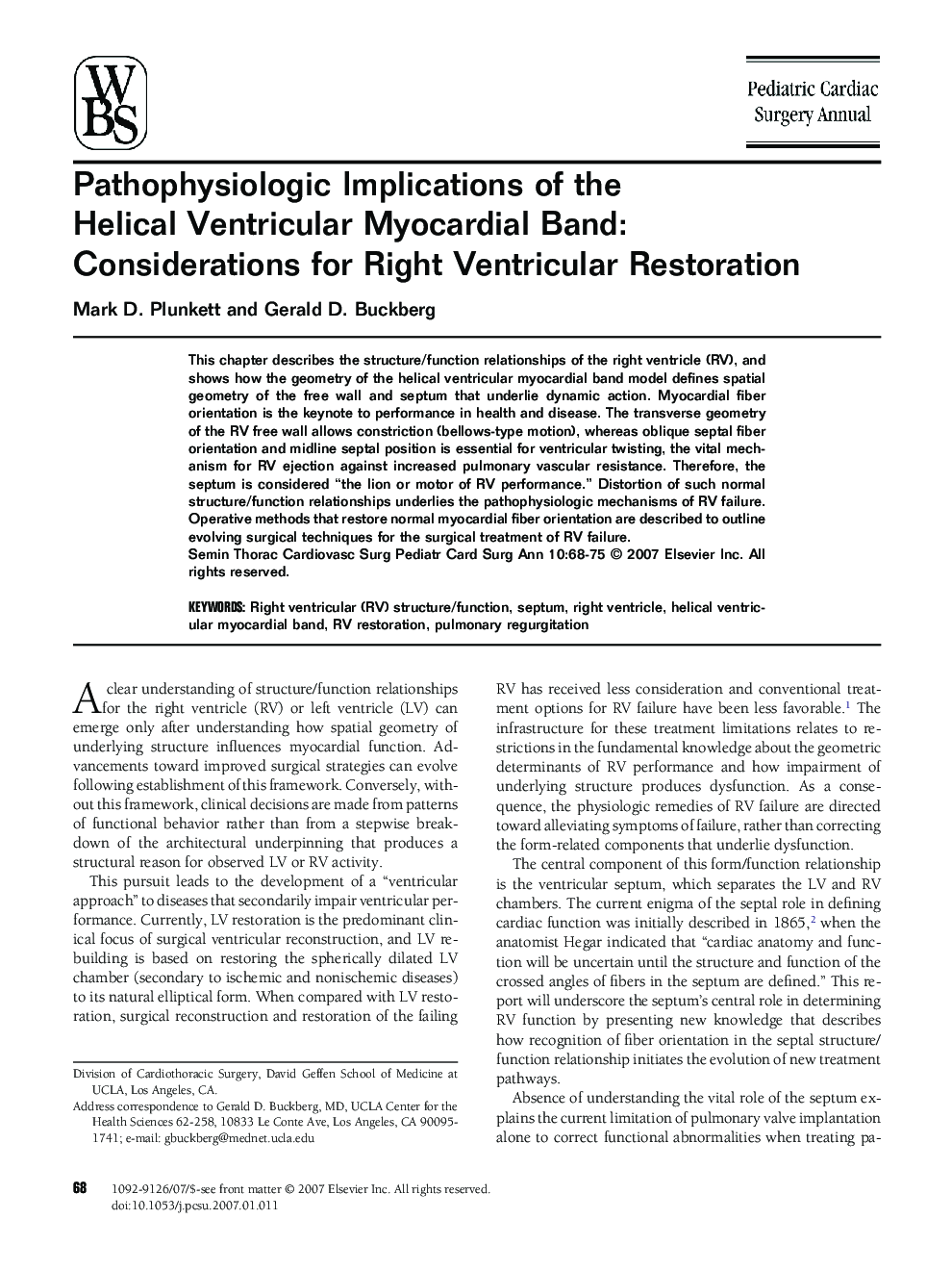| Article ID | Journal | Published Year | Pages | File Type |
|---|---|---|---|---|
| 3026009 | Seminars in Thoracic and Cardiovascular Surgery: Pediatric Cardiac Surgery Annual | 2007 | 8 Pages |
Abstract
This chapter describes the structure/function relationships of the right ventricle (RV), and shows how the geometry of the helical ventricular myocardial band model defines spatial geometry of the free wall and septum that underlie dynamic action. Myocardial fiber orientation is the keynote to performance in health and disease. The transverse geometry of the RV free wall allows constriction (bellows-type motion), whereas oblique septal fiber orientation and midline septal position is essential for ventricular twisting, the vital mechanism for RV ejection against increased pulmonary vascular resistance. Therefore, the septum is considered “the lion or motor of RV performance.” Distortion of such normal structure/function relationships underlies the pathophysiologic mechanisms of RV failure. Operative methods that restore normal myocardial fiber orientation are described to outline evolving surgical techniques for the surgical treatment of RV failure.
Related Topics
Health Sciences
Medicine and Dentistry
Cardiology and Cardiovascular Medicine
Authors
Mark D. Plunkett, Gerald D. Buckberg,
